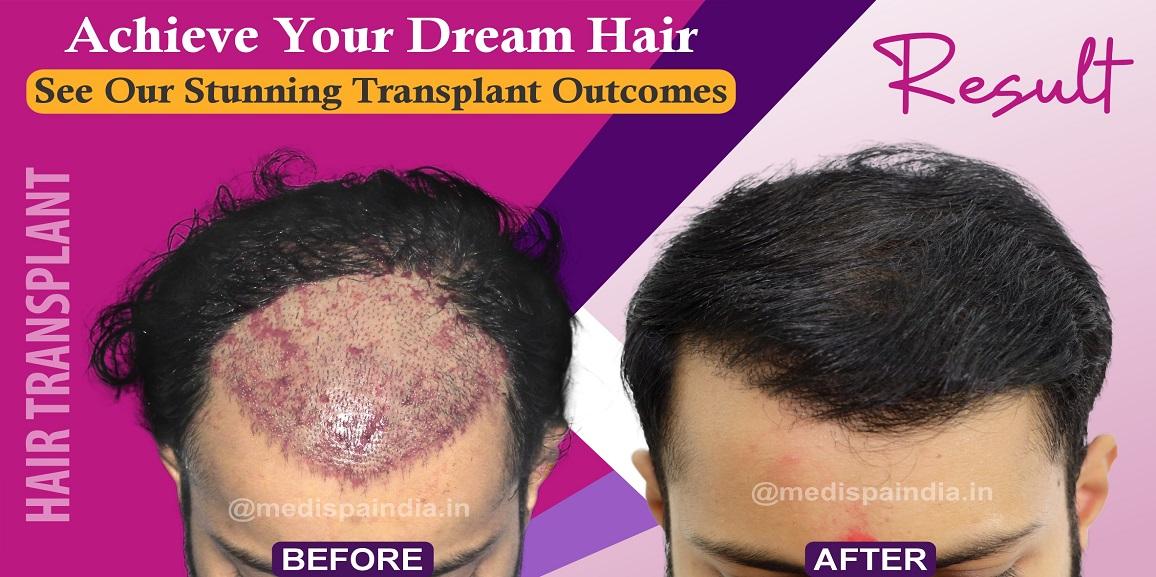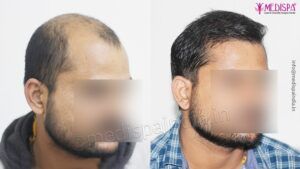
Bangalore, the technological and entrepreneurial hub of India, has experienced significant transformations in terms of urbanization, industrialization, lifestyle, and population growth. Unfortunately, these changes have also brought about certain challenges, such as hair loss. However, being a city known for its fashion sense and educated population, the residents of Bangalore are well-informed about hair transplant procedures. While there are centers in the city that offer this treatment, the quality of these procedures remains questionable. On a positive note, the hair transplant cost in Bangalore is quite affordable and comparable to other major cities, if not even lower. However, this affordability may be attributed to the limited number of reputable hair transplant clinics in the city.
In India, Jaipur and Delhi are considered as the top destinations for quality hair transplant procedures, attracting a large number of patients due to the presence of highly reputed surgeons in these cities. The high patient influx in these cities suggests that the surgeons here may possess more experience and expertise compared to even the top surgeon for hair transplant in Bangalore. Hair transplant involves a minimally invasive surgical process where hair grafts are extracted from the donor area and transplanted to the balding area. The most common donor areas are the back and sides of the head, as well as body hairs other than the scalp. These donor areas contain permanent hair roots. While the procedure may seem straightforward on paper, it requires a high level of skill, finesse, and critical decision-making from the surgeon. Therefore, it is advisable to consider traveling to the hotspots of Delhi and Jaipur if you are planning to undergo a hair transplant. Additionally, Bangalore/Bengaluru has convenient transportation links to these cities via trains or flights.
Hair transplant and its techniques
Hair transplantation is a minimally invasive surgical procedure that involves carefully extracting hair follicles from the donor area and transplanting them to the recipient’s bald area. The selection of the donor area is based on the required hair density and availability in the desired areas.
The key to the success of hair transplantation lies in the graft harvesting procedures. There are two main techniques used in hair transplantation:
- Follicular Unit Transplantation (FUT) or strip technique: This technique involves removing a strip of scalp tissue, which is then dissected in a graft separation room to obtain individual grafts. These individual hair grafts are then implanted in the recipient’s bald area.
- Follicular Unit Extraction (FUE): In this technique, individual hair follicles are extracted using a punching device and then transferred to the recipient’s bald area.
The choice of hair transplantation technique should be made carefully, taking into consideration various factors such as the extent of baldness, the patient’s age and gender, the number of grafts available or required, and the hair density of the follicles in the donor area.
How can we assure permanent results from hair transplant treatment?
Hair transplant is considered the most reliable solution for hair loss, providing permanent results. The key to achieving lasting outcomes lies in utilizing hair grafts that are resistant to DHT. Unlike hair follicles that are sensitive to DHT and prone to thinning or miniaturization due to androgenic hormones, DHT resistant hair grafts maintain their original characteristics. When these grafts are transplanted to areas experiencing baldness, they retain their resistance to DHT and continue to thrive for a lifetime.
During a hair transplant procedure, it is crucial to exercise caution when harvesting hair grafts to prevent over harvesting, as this is essential for ensuring long-lasting results. Over harvesting can result in damage to the safe donor area, impacting the survival of the hair grafts negatively. Therefore, performing a hair transplant requires precise execution, informed decision-making, impeccable skills, and extensive knowledge. Unlike temporary solutions that may provide immediate results but require constant replacements, hair transplant remains the only permanent solution for hair loss.
How can we confirm about the permanence of hair transplant results?
After considering the mixed feedback on hair transplant procedures, including the growing number of unsuccessful outcomes in India, patients have begun to question the reliability of achieving permanent results. To help you in your quest for a successful hair transplant with natural-looking outcomes, here are several factors to consider:
- Who is the right surgeon?
When searching for the right surgeon, it is crucial to consider their qualifications and experience, as these are key factors in achieving successful results. It is advisable to choose a hair transplant surgeon who is licensed and board certified. By accessing testimonials and a photo gallery of previous patients, you can gain insight into the surgeon’s expertise. Additionally, the success of a hair transplant procedure relies on teamwork, so it is important to assess the experience of the supporting team as well.
- Appropriate technique: The selection of the appropriate technique for a hair transplant requires sound decision-making and the practical application of knowledge. Factors such as the patient’s age, gender, extent of baldness, number of grafts needed, and the quality and quantity of hair in the donor area influence the choice of technique. Each technique demands precision and should be performed by an expert surgeon. The FUT technique, although more complex, offers numerous advantages over FUE. On the other hand, FUE hair transplant is simpler but still requires precision and careful technique to avoid overharvesting of follicular grafts or increased damage to hair follicles during the harvesting process.
- Postoperative care: Following a transplant surgery is a crucial aspect of ensuring successful results. In addition to the skill of the surgeon, the patient’s commitment to following post-transplant instructions is essential. Typically, post-transplant care is recommended for up to 10 days to maintain the effectiveness of the procedure.
- Advancements: In order to achieve optimal outcomes in hair transplant procedures, it is important to utilize advanced technology and equipment. Choosing a clinic that is equipped with state-of-the-art instruments and performs each step under high magnification can significantly enhance the overall results.



